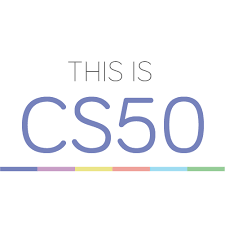Description
ACM India is hosting a one-day Digital India event in conjunction with VLDB 2016 and Persistent Systems Ltd. We are very excited by the opportunities presented by the ambitious Digital India program launched by Hon. PM Narendra Modi. It is a grandeur vision of uniting a large nation like India via high-speed digital highways. 1.2 billion Indians will be connected together and will have access to open information. Data takes the center stage in this vision due to the sheer size of India’s population. With ~1 billion Aadhar cards, 200+ million Jan-Dhan Yojna accounts, the magnitude of India-scale data is humongous. Such large data processing will need specialized big data and analytics expertise.
Digital India event aims to address these India-scale data problems and how technology can be instrumental in solving those. It will also facilitate an innovation showcase for Indian startups especially working in big data area.
Very Large Data Bases (VLDB) is a premier annual international forum featuring research talks, tutorials, demonstrations and workshops in areas like data management, database and information systems research. It is aimed at database researchers, vendors, practitioners, application developers, and users. VLDB 2016 will be held at the Leela Hotel Gurgaon from 5th to 9th September 2016.
The concluding ceremony of Digital India Hackathon is planned in two steps. The presentation round will happen on 4th September where top 6 teams on 6 criteria will be chosen. These teams will pitch final presentation at Leela Hotel on 5th September and final 2 winners will be announced.
For more information about VLDB 2016 and Digital India Event, please visit http://vldb.org/2016

Rules
-
This is a team participation hackathon. You can have at most 4 members in your team.
-
You can either invite your friends to form a team or you can request other teams to add you as a member.
-
The hackathon will start at 20-06-2016 06:00 PM and end at 20-08-2016 11:55 PM, you work on your hack during the allotted time only.
-
It’s an online hackathon, you can participate from anywhere.
-
There are 5 themes of the hackathon, you must submit a hack that is in one of these themes.
-
Once the hackathon starts, you will get an option to submit your hack, you can submit as many times as you want, the last hack will be considered as the final submission.
-
You are expected to come up with new and innovative ideas, any idea that has been copied from somewhere will be disqualified.
-
Your hack must be developed entirely during the Hackathon duration. You may use open source libraries and other freely available systems / services such as Google Maps, Facebook Connect, Twitter feeds etc.
-
The intellectual property of your code belongs only to your team.
-
By participating in the hackathon, you agree to the terms and conditions of HackerEarth.
Themes
Candidates can use innovative ideas along with data-driven solutions such as prediction systems, statistical analysis, and/or data visualization to develop Web/mobile applications, visualizations, recommendation engines for fellow citizens, proposals about common standards for data sets. They can also create their own datasets from open government data and process it over a cloud platform of their choice. Alternatively, they can scrape/pull data from data.gov.in to make it available for others.
Let your imagination explore the use of data analytics to its visualization to create solutions for data-driven India. The solutions could range from reservations to payments solutions, ancillary offerings to crisis management, and more!
 Healthcare
HealthcareWe believe that healthcare innovation is fueled by diverse data and analysis. Data-driven health solutions aim at transforming healthcare segments by connecting healthcare data with developers, innovators, and entrepreneurs enabling them to build realistic, human-centric solutions for key healthcare problems.
Resources:
 Employment
EmploymentCreate data-driven employment solutions that will allow citizens to plan and excel in their respective careers. You can also help to simplify the current process that is set for looking for jobs on government job portals. You may append statistical analytics and heat map-based solutions.
You can leverage below APIs/Resources:
 Citizen Services
Citizen ServicesCitizens can avail Government services (without visiting a government office) through the Internet with the help of various services. You can build services related to Passports, Aadhaar cards, PAN cards, railway reservations, police stations, water/waste management, and much more.
 Social Media and Government
Social Media and GovernmentGovernment agencies are increasingly using social media to engage with citizens, share information, and deliver services more quickly and effectively. You can use innovative ideas to create solutions that will help the government to connect more openly with its citizens.
 Agriculture
AgricultureHelp build a sustainable food system by providing publicly-available data to farmers, researchers, and consumers. You can source data from market reports, weather forecasts, surveys, and sensors that provide on-demand GPS monitoring and mapping tools.
Reference sources:
Prizes INR 350000 in prizes
Main Prizes
 1st Prize INR 250000
1st Prize INR 250000 2nd Prize INR 100000
2nd Prize INR 100000Special Prizes
 Most innovative solution Monetary reward
Most innovative solution Monetary reward Most technically complex solution Monetary reward
Most technically complex solution Monetary reward Excellent user experience and engagement Monetary reward
Excellent user experience and engagement Monetary reward Power of women award for all-women team or teams with maximum female participants Monetary reward
Power of women award for all-women team or teams with maximum female participants Monetary reward Best idea in terms of Best business angle and proposal
Best idea in terms of Best business angle and proposal


